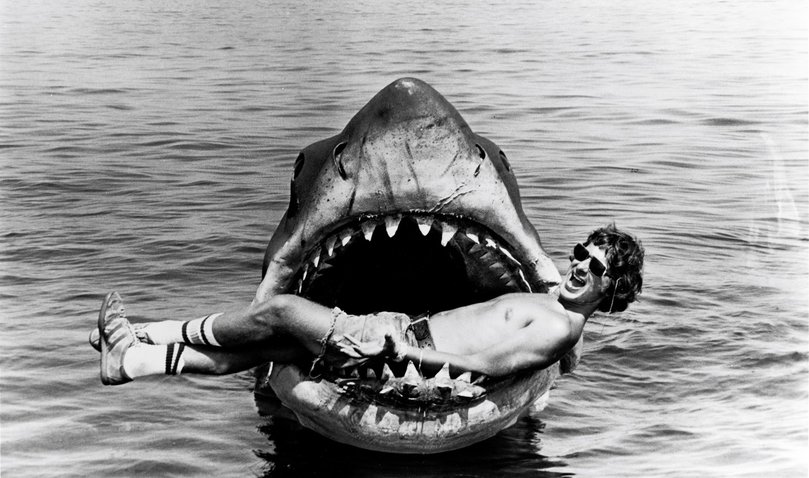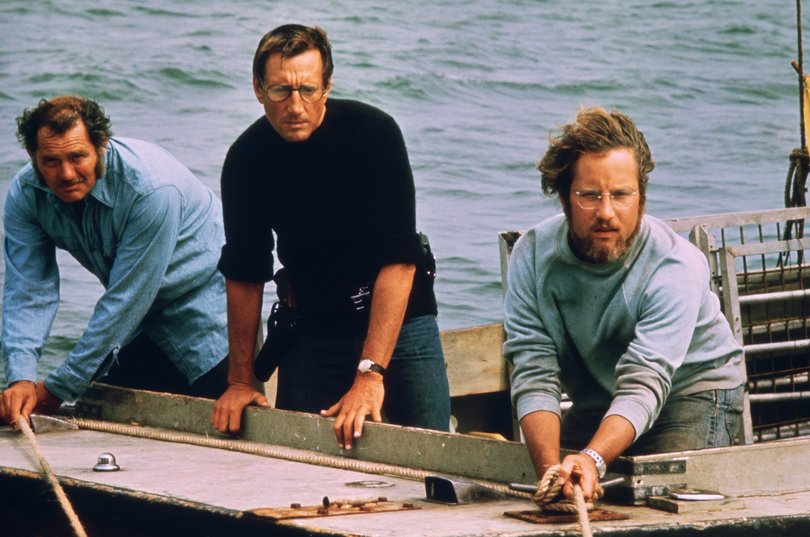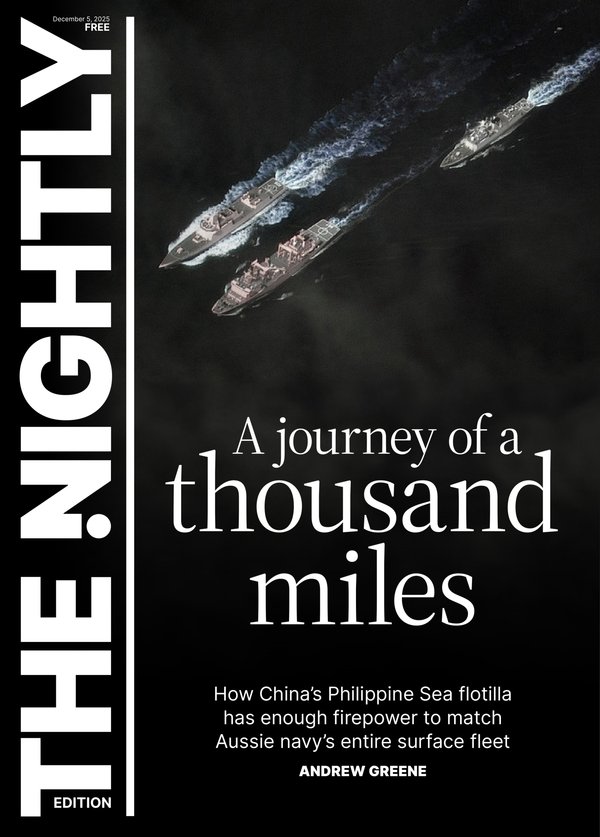Blockbuster turns 50: Without Jaws, there wouldn’t have been Marvel, John Wick or the Fast & Furious

His name is Bruce.
The animatronic shark in Jaws had a screen time of roughly four minutes in a two-hour film, but remains one of the most terrifying villains in cinematic history. Bruce has been surpassed by few in the 50 years since its release this week in 1975.
He was a mostly unseen force that stalked the terrified swimmers of Amity Island, preceded by John Williams’ duh-dun-duh-dun refrain. It wasn’t just that Bruce was enormous and had big chompers that could rip you apart, it was that he seemed to be a thinking shark who could outmanoeuvre the humans.
Sign up to The Nightly's newsletters.
Get the first look at the digital newspaper, curated daily stories and breaking headlines delivered to your inbox.
By continuing you agree to our Terms and Privacy Policy.The first proper look at him came roughly an hour and 20 minutes in, but by then, he was already embedded in the darkest, scariest parts of its audience’s hearts.
That wasn’t the original plan, though.

Steven Spielberg was, at the time, a twentysomething director who had been hired by producers Richard D Zanuck and David Brown after the pair worked with him on his feature debut, The Sugarland Express.
He wasn’t the first choice, but Spielberg had seen an unpublished copy of the Jaws novel in Zanuck and Brown’s office and asked to read it. The other director lost the gig when he kept referring to the shark as a whale.
Spielberg was insistent on filming in Martha’s Vineyard in Massachusetts, so that the movie would look authentic. It made the film look way better, but it also made production infinitely more difficult, and what was to be a 55-day shoot blew out to 159 days.
“I was naive about the ocean, basically. I was pretty naive about mother nature and the hubris of a filmmaker who thinks he can conquer the elements was foolhardy, but I was too young to know I was being foolhardy when I demanded that we shoot the film in the Atlantic Ocean, and not in a North Hollywood tank,” Spielberg told Ain’t It Cool News in 2011.
At one point, the boat that doubled for the Orca was being pulled by a speedboat, which was going too fast and pulled out the planking from the haul. Water started to rush in, and the actors started yelling to get them off the vessel. It sank in about two minutes.

The most consequential change from Spielberg’s plans was that the mechanical sharks just didn’t work most of the time.
There were three full-size prop sharks that were made for the production, and each moved in a different way and served a different purpose. They were problematic from the start, whether it was capsizing on the ocean floor or being hampered by bad weather, fractured frames and getting tangled in seaweed.
The neoprene that skinned the mechanical models also ballooned when it soaked up salt water – it was built for fresh water.
It forced Spielberg to use a lot less of the shark than was originally scripted. So, then you only get a fin or a shadow, or the frenzied movements of someone being pulled under but not the monster itself.
“When I didn’t have control of my shark, it made me kind of rewrite the whole script without the shark. Therefore, in many people’s opinions, the film was more effective than the way the script actually offered up the shark in at least a dozen more scenes that today is history,” Spielberg previously said.
There’s even an Australian connection. Shark experts and documentary makers Ron and Valerie Taylor were recruited to shoot underwater footage of real-life Great Whites off the coast of Australia.
The actual shark was smaller than Bruce so to get around it and create the impression of might, they hired actor Carl Rizzo, who was four-foot-11, to double for Richard Dreyfuss’s Hooper.
The shark became tangled in the ropes of the cage with Rizzo in it, and Spielberg rewrote the Jaws scene so he could use the footage.

He told Laurent Bourzereau in the book Spielberg: The First Ten Years, “Jaws was a fun movie to watch, but not a fun movie to make. It was made under the worst of conditions. People versus the sea. The sea won the battle, but where we won was with audiences in every country.”
Jaws heralded the modern (Northern Hemisphere) summer blockbuster. The term blockbuster literally means lines around the block, and Jaws became the first movie to hit $US100 million at the US box office.
It spent 14 weeks as the No.1 movie in the US and across its original frame and a slew of re-releases over the years, it’s earned $US476m worldwide. Not bad for a film that had everyone worried because it blew its $US3m budget to $US9 million.
At the time of its release, it was the highest-grossing film of all time until Star Wars came along two years later.
Prior to Jaws, US distributors considered summer to be something of a dead zone, reserved for bored teenagers on school break. So the movies with the most commercial potential were slated for other times of the year.

With Jaws’ success, it rewrote the rulebook. Now, the association between mid-year and mass-appeal movies driven by action, spectacle and big screen stars is unbreakable. Without Jaws, there wouldn’t have been Marvel, John Wick or the Fast & Furious franchise.
For Spielberg, Jaws supercharged his career. He had wanted to make Close Encounters of the Third Kind, but no one wanted to greenlight the movie until he became the director who did Jaws. Columbia studios promptly signed up to Third Encounters and Spielberg has said Jaws is the reason why he’s had final cut privileges ever since.
Spielberg was asked to go back for the sequels, but he was done. He didn’t want to spend another nine months sitting on a boat.
Sharks didn’t come off nearly as well. Jaws set off a raft of hunters who gleefully became the predators against the marine creatures.
Peter Benchley, who wrote the book, later expressed regret that he created a villain in shark form, while in 2022, Spielberg told the BBC’s Island Discs, “That’s one of the things I still fear. Not to get eaten by a shark, but that sharks are somehow mad at me for the feeding frenzy of crazy sport fishermen that happened after 1975.
“To this day, I regret the decimation of the shark population because of the book and the film. I really, truly regret that.”
Bruce was named after Spielberg’s lawyer, Bruce Ramer.
Jaws is available to stream on Paramount+ and Binge

